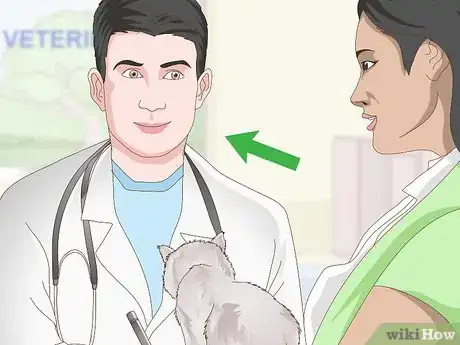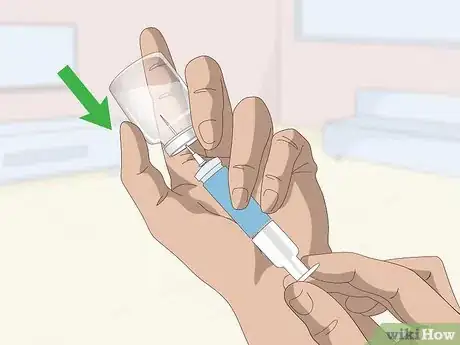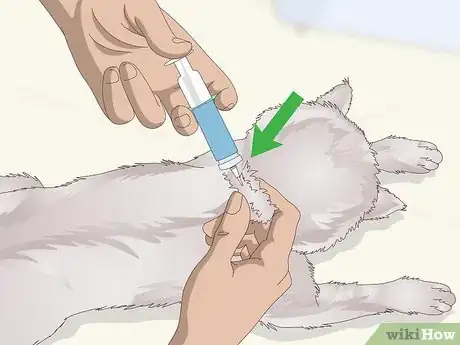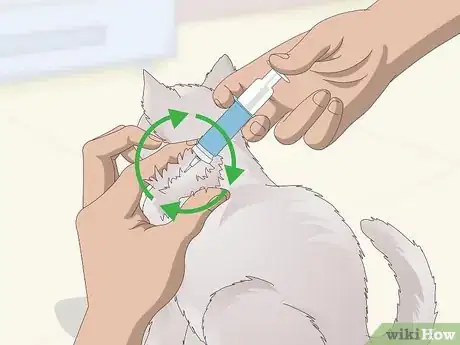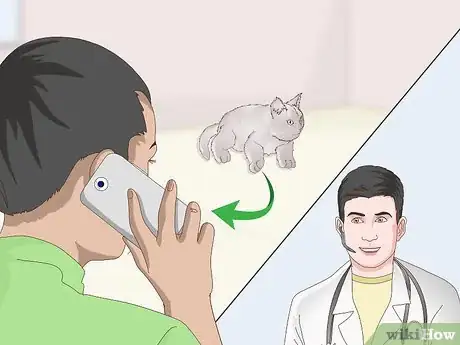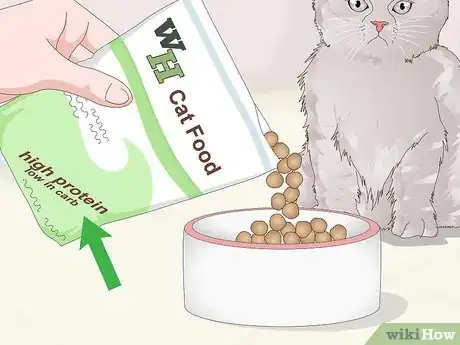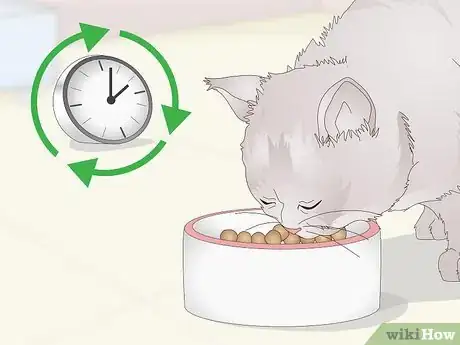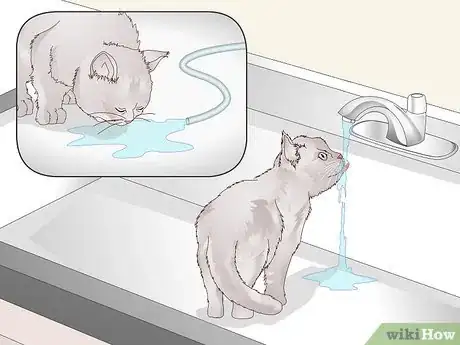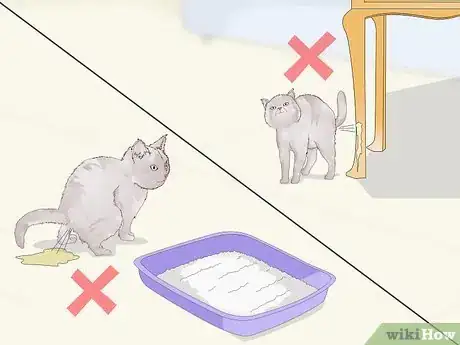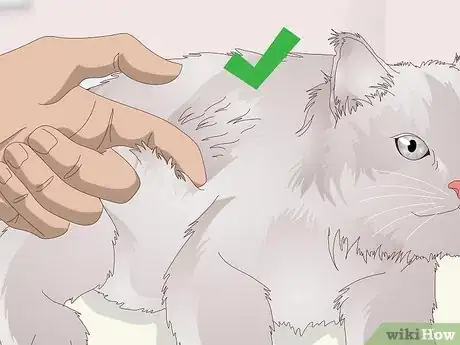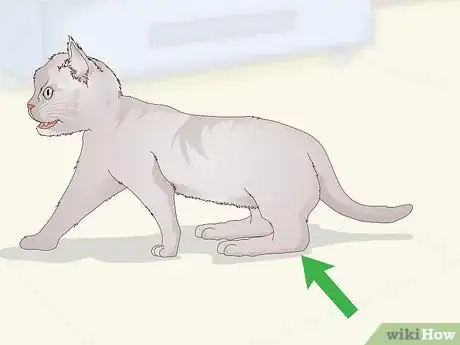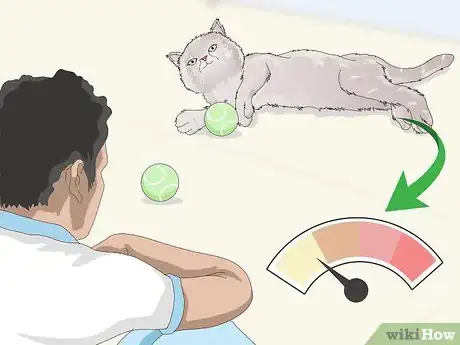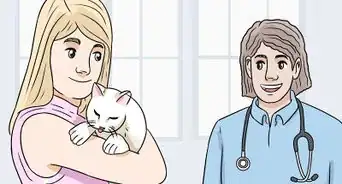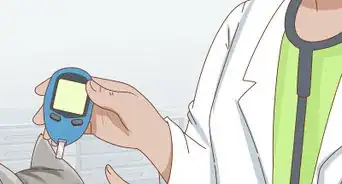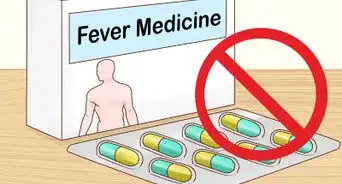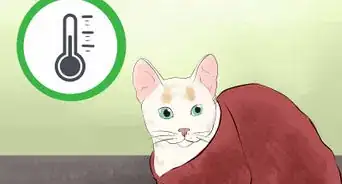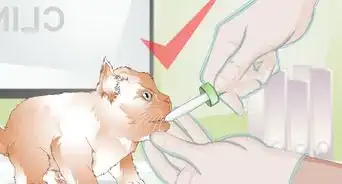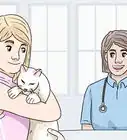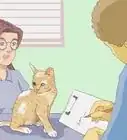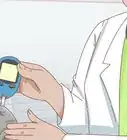This article was co-authored by Lauren Baker, DVM, PhD. Dr. Lauren Baker is a Veterinarian and Assistant Scientist at the University of Wisconsin-Madison. With over 10 years in veterinary medicine, she specializes in the concept of “one health,” which uses insights from veterinary medicine to help human medical research. She holds a Ph.D. in Comparative Biomedical Sciences, a Doctor of Veterinary Medicine, an MS in Comparative Biomedical Sciences, and a Bachelor’s degree in Psychology from the University of Wisconsin-Madison.
There are 11 references cited in this article, which can be found at the bottom of the page.
This article has been viewed 26,151 times.
If your cat suffers from feline diabetes, it is still possible for your kitty to return to an insulin-free life with the proper treatment. After your cat receives a diabetes diagnosis from your veterinarian, you must start treating the condition immediately. With the right insulin doses and a healthy diet, your cat may enter diabetic remission. To keep your cat in remission, you should help your cat stay healthy and fit through proper diet and exercise. You also need to always be wary of returning symptoms of feline diabetes.
Steps
Treating Feline Diabetes
-
1Consult your veterinarian. Feline diabetes is a serious condition that must be treated with the supervision of a medical professional. You need to get a diagnosis from your vet and advice on a recommended plan for treatment.[1]
- If you think your cat has diabetes, or if your cat’s existing diabetes has changed, you need to schedule an appointment to see the veterinarian.
-
2Prepare an insulin injection. Insert the end of the sterilized syringe into the vial of insulin and pull back on the dropper until you reach the proper dosage. You should push the plunger all the way down to release the insulin back into the vial, and redraw the insulin again. This will help you safely get the right dosage, as insulin can stick to the inside of the plastic syringe or create an air bubble inside.[2]
- Don’t shake the insulin bottle unless directed to do so by your vet.
Advertisement -
3Administer insulin to your cat. This is usually given to cats by injection twice daily, but sometimes can be administered differently depending on the formulation. Follow your vet’s advice on how to give your cat the insulin. Typically, insulin shots are given in the back, in the skin between the cat’s shoulder blades.[3]
- Pull on this loose skin so that it pulls up and away from the cat’s body. Insert the syringe at a 45 degree angle, and pull back on the plunger a bit. If you can see blood enter the syringe, that means you’ve inserted the needle in a blood vessel and you need to remove the needle and choose a new spot.
- If there is air, it means you’ve accidentally gone through the skin rather than into it. Remove the air from the syringe and try again.
- If there is no blood, push the plunger down slowly until the entire dose of insulin is expelled.
- If you give your cat oral hypoglycemics instead of insulin, it may help to hide the pill inside a treat so that your cat will willingly swallow it.
-
4Remain consistent with the insulin injections. One of the biggest causes of remission in cases of feline diabetes is regularly providing doses of insulin. After a period of time with a consistent course of insulin treatment, many cats go into full remission.[4]
- Always consult your vet before making any decisions about changing doses or weaning your cat off of the insulin.
- Ask your vet about a new kind of insulin called glargine, which has been shown to promote remission of feline diabetes.
-
5Treat it early. Early treatment is the single most important factor in feline diabetes remission. The longer the disease is left untreated, the more damage is done to your cat’s body and the less likely it is that the cat will ever experience remission.[5]
- Watch for symptoms of diabetes and report them to your vet immediately if you suspect feline diabetes. The faster you act, the better the outcome will be.
Monitoring Your Cat’s Weight
-
1Give your cat a high protein, low carb diet. Cats who are obese are at a much greater risk for diabetes than cats who are not. In order to keep your cat in diabetic remission, you need to strictly manage its diet. Feed your cat a high quality food that is high in protein and low in carbohydrates. This means that the food should be made with real meat ingredients, not something with “meal” or “byproduct” listed as one of the first ingredients.[6]
- How much you should feed your cat depends on various factors – like the age, weight, and energy level of your cat. But typically, cats should be fed 1⁄2 c (120 mL) of food twice daily.[7]
- Consider giving your cat a high quality wet food rather than dry kibbles.
- Remember to always change your cat’s food gradually over a period of a week or two, rather than all at once. This will help your cat adjust to the new food and avoid any digestive issues.
-
2Feed your cat at specific times. While allowing your cat to self-feed is a much more convenient option, it usually isn’t the best option for your cat. Allowing your cat to eat whenever it wants is one of the leading causes of obesity in cats. Instead, feed your cat a predetermined amount twice daily.[8]
- Kittens need more food per pound than adult cats do. But regardless of the age of your cat, you should follow your vet’s recommendation for how much food to give the cat at each feeding.
- Remember that cats receiving insulin should be fed according to the insulin schedule, meaning that diabetic cats should eat at the same time as the insulin injection.
-
3Make sure your cat gets enough exercise. Encourage your cat to play and be active in order to help it remain in diabetic remission. This is one of the best ways to help your cat stay healthy and strong in the face of a diabetic diagnosis.[9]
- Provide your cat with various toys to keep it entertained and active. Try letting your cat chase you around with a string toy, or jump after a feather toy. Throw a toy mouse and play fetch with your cat.
Watching for Diabetic Symptoms
-
1Notice an increase in thirst. Cats who suffer from feline diabetes often exhibit an excessive increase in thirst. They can be seen drinking water constantly from many different sources.[10]
- This also means that there will be an increase in urination with more frequent trips to the litter box.
- Remember that most cats enjoy drinking water from running faucets; this is totally normal. You need to be wary of any sudden and excessive increase in thirst, not just normal cat behavior.
-
2Monitor your cat’s bathroom habits. Urinating outside the litter box is a big sign of feline diabetes. If your cat seems to be having accidents, you might want to bring it in to the veterinarian’s office for some test to determine whether or not diabetes is affecting the cat again. [11]
- Urinating outside of the litter box could also be a sign of a urinary tract infection, which is also a symptom of feline diabetes.
- This is especially true for cats who rarely urinate outside of the litter box under normal circumstances.
-
3Check your cat’s coat. If your cat’s coat seems to have suddenly lost its sheen, this could be a sign of the diabetes recurring. You should also take notice if the cat’s fur has become somewhat raggedy over a short period of time.[12]
- Groom your cat regularly with a wire-bristled pet brush to give yourself an opportunity to inspect the cat’s coat.
- If you notice any sudden change in your cat’s appearance or in the texture of its coat, you should notify your veterinarian.
-
4Notice a change in gait. Some cats with feline diabetes develop a change in the way they walk. Normally cats walk on their feet, but cats with diabetes often start walking with their hocks touching the ground – these are the parts of the cat’s back legs that stretch from the feet to the first joint (kind of like the knee joint). If you see your cat’s hocks on the ground while it walks, take it to the vet immediately.[13]
- This condition is called diabetic neuropathy. It is the result of a nervous system abnormality that is most often caused by diabetes.
-
5Watch your cat’s activity levels. Another major sign of recurring diabetes in cats is noticeable lethargy. If you notice a sudden decrease in your cat’s energy levels, this could be a warning sign and may be indicative of a serious problem.[14]
- Monitor how much your cat plays and how interested it seems in being active when you encourage playtime.
- Keep track of your cat’s activity levels so that you can report it to your veterinarian.
References
- ↑ https://www.vet.cornell.edu/departments-centers-and-institutes/cornell-feline-health-center/health-information/feline-health-topics/feline-diabetes
- ↑ http://www.drsfostersmith.com/pic/article.cfm?articleid=2070
- ↑ http://www.drsfostersmith.com/pic/article.cfm?articleid=2070
- ↑ http://www.huffingtonpost.com/dr-karen-becker/many-cats-with-diabetes-c_b_9741228.html
- ↑ http://veterinarymedicine.dvm360.com/cvc-highlight-what-influences-diabetic-remission-cats
- ↑ https://vcahospitals.com/know-your-pet/diabetes-mellitus-in-cats-overview
- ↑ http://www.askthecatdoctor.com/howmuchtofeedcat.html
- ↑ https://www.vet.cornell.edu/departments-centers-and-institutes/cornell-feline-health-center/health-information/feline-health-topics/feeding-your-cat
- ↑ https://www.adwdiabetes.com/articles/what-to-expect-when-cat-achieves-diabetic-remission
- ↑ https://www.vet.cornell.edu/departments-centers-and-institutes/cornell-feline-health-center/health-information/feline-health-topics/feline-diabetes
- ↑ http://www.peteducation.com/article.cfm?c=1+2130&aid=199
- ↑ https://www.pbspettravel.co.uk/blog/symptoms-diabetes-cats/
- ↑ http://www.peteducation.com/article.cfm?c=1+2130&aid=199
- ↑ http://mycathasdiabetes.com/diagnosis.html
About This Article
To keep a cat in diabetic remission, administer insulin injections daily and be sure to follow your veterinarian's instructions for dosage and frequency. Being consistent with insulin injections is the best way to keep your cat in remission! Because of your cat's condition, it's important to feed it on a regular schedule twice per day. Give your kitty quality wet food that's high in protein and low in carbohydrates for the best results. Encouraging exercise by providing plenty of toys and having frequent play sessions can also keep your diabetic kitty healthy and happy! For tips from our Veterinary co-author on symptoms to watch out for, read on!
